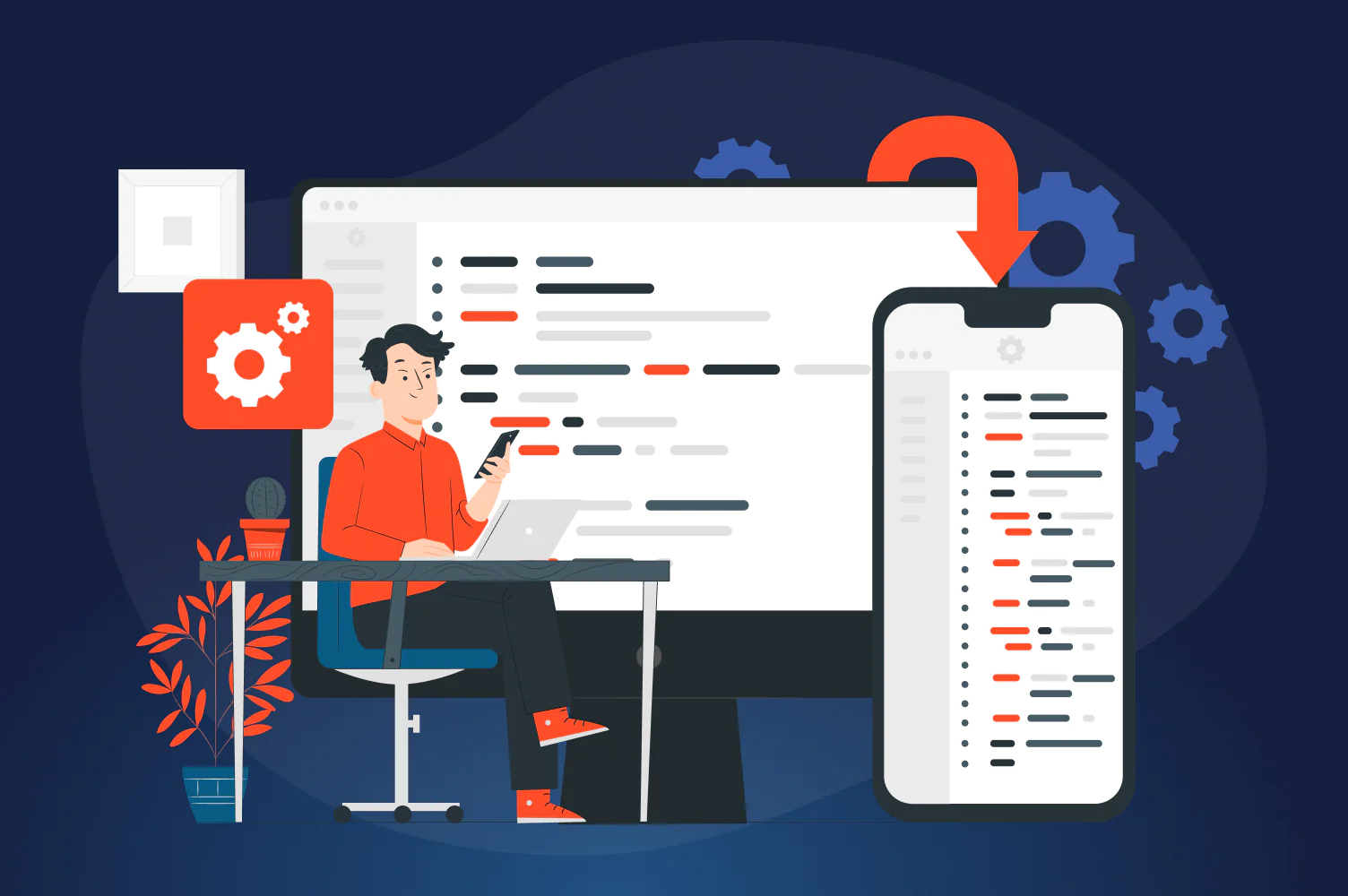Why has education technology (edtech) been popular only for a couple of years? Why did we use computers and the Internet just for sharing silly memes and Elon Musk tweets all the time? Truth be told, because we didn’t actually need edtech before. Even the smartest software can’t fully replace a human teacher, so digital technologies were no more than supplementary learning tools.
With the COVID-19 pandemic, schools, colleges, and universities had to switch on remote study mode, so edtech became a life jacket for the whole industry. HolonIQ reports that global edtech venture capital funding has grown from $500 million to $7 billion within the last decade. Edtech brings new opportunities such as contactless instructing, personalized learning, advanced teaching/learning experiences, and such.
Such an impressive growth of the edtech industry also means that many new businesses join the competition, so you may be scratching your head about what solution is worth developing now. In this article, the JatApp team will explain what’s really going on with digital transformation in education trends and what tech solutions currently make the strongest impact on education and learning.
How technology transforms education
Digital transformation in education primarily affects the main parties that are related: schools and universities, students, teachers, and parents. So, let’s discuss what kind of impact edtech makes on each group.
Schools, universities, and colleges
Schools, universities, and colleges are not only educational institutions but businesses as well. That is why digital transformation influences the way these businesses work and make money.
Education by subscription
The coronavirus pandemic hit the world economy hard. Today, businesses need to find new ways they can earn money. A subscription-based education is one of the freshest ideas for colleges and universities to create a viable alternative to the traditional way of paying for higher education.
Boise State University is one of the pioneers that leads this digital learning trend. Instead of getting enrolled, students can subscribe to the university for a monthly fee. They can take any courses they want, when they want, and have long-term mentoring and career help.
The monthly subscription motivates students to act responsibly with their education and focus on studying subjects they really need for their future career. As a result, the majority of subscribers are likely to graduate in 18 months.
The number of students subscribed per semester
Also, the subscription model saves a lot of resources. The New York Times reports that the subscription costs $425 a month for six credit hours or $525 for nine in either of two online Bachelor’s programs. That’s 30% less expensive than the in-person education in the university. Once students can study remotely, there are no expenses on maintenance of campuses, libraries, classrooms, and so on.
Even if you don’t think about starting your own digital university, you can still develop a platform or infrastructure that can be used by colleges and universities that are going to use a subscription model. Only 13% of schools, colleges, and universities are actively engaging in digital transformation, while the rest aren’t able to build their own solution, so your product can fill in their tech gap.
Scaling the business up and providing access to a larger customer base
Digital technologies enable schools, colleges, and universities to grow their business by offering their services to a larger pool of users. Once edtech is mostly used for studying from home, it means that more students can get access to quality education regardless of their location and income.
For example, the owner of Brandon Learning Centre, the organization that prepares Chinese students for entry in the top schools of the United Kingdom, decided to scale their business and increase their number of customers. The owner contacted JatApp with a request to build an online test preparation platform for students who’s going to pass a pre-test for entering a school in the UK.
JatApp developed PreQuest, a digital education platform that helps schoolchildren aged from 9 to 12 years old to master their skills necessary for the school entrance in four areas of study — Verbal and Non-Verbal Reasoning, English, and Math.
PreQuest user interface
The newly developed software enabled the organization to help students who don’t attend physical classes. The school reports that 100% of students who use PreQuest get interview invitations at least from one top school in the United Kingdom.
Students
As for students, digital transformation in education impacts their experiences of living on campus and the ways they can approach learning.
Campus environments
The COVID-19 pandemic causes a need for contactless interactions, social distancing, and other preventive measures to stop the spread of the virus. That’s why the following software products are rock-solid solutions for campus safety and school/college/university environments.
Body temperature control at the entry
Such software is used to measure the body temperature of everyone who enters the campus or class. In case a visitor has a high temperature, they’re not allowed to enter and notified to visit a doctor. RTN Temperature Screening can make a valid example here.
Temperature screening kiosk by RTN
Contactless attendance of campus and classes
Touch-free access control and visitor management systems can be used in campuses and classes. For instance, a visitor can enter a campus or class only after authorization by being scanned with a video camera at the entrance or PIN code sent as a push notification/text message to the visitor’s smartphone.
Suprema Security & Biometrics is one of the numerous examples that can describe such a type of solution.
Visitor access system by Suprema Security & Biometrics
Social distancing alert systems
These solutions are also a low-hanging fruit for advancing the COVID-19 safety measures. The system detects whether people stay within a range of a social distance, and in case they’re not, sends a notification alert.
Social Distancing Alert System by LeewayHertz is one of the most convenient solutions in this category, as it easily integrates with connected circuit television cameras (CCTV).
Social distancing detection feature
Face mask detection
Wearing face masks plays a vital role in stopping the spread of coronavirus, which is why identification of people without a face mask is crucial. Such solutions use face recognition technologies to detect a person without a mask and send a notification that they must put the mask on immediately or they automatically fall in the pit with hungry alligators leave the area. Again, the Leeway Hertz product is a good example of such technology.
Face mask recognition system
Learning environments
Learning environments is perhaps the most affected area of the education sector, since edtech offers a variety of opportunities. Let’s talk more about them.
Videoconferencing for lessons, lectures, and seminars
Zoom, Skype, and other video conferencing softwares have become popular during the pandemic as they enable users to interact without a physical contact. Do we really need to say that video conferencing solutions are commonly used for remote learning as well?
A lesson via video conferencing with Zoom
Student-centered, personalized, and adaptive learning
Personalization and focus on a student is one of the main tendencies in modern education. People learn in different ways, which is why forcing everyone to follow a curriculum that is designed according to the performance of an average student doesn’t bring as good results as there could be.
Instead, approaching each student individually and arranging their learning process in the most convenient way for them can be more fruitful than a mainstream collective learning. In such a way, various solutions that help to personalize a student’s learning process are one of the main digital trends in education.
For example, a virtual teaching assistant Jill Watson is the artificial intelligence (AI) solution that helps students to navigate through tons of learning materials and lectures in order to find relevant information and answer the questions students may have.
Jill Watson bot explains a student some of Python basics
New learning experiences
Since edtech software started growing by leaps and bounds, the learning process can go beyond the classroom, textbooks, and blackboard. Digital solutions enable students to immerse in learning much deeper with a focus on training of practical skills rather than memorization of dull theory. A typical example can be provided by virtual/augmented reality (VR/AR) products, which are one of the most effective edtech solutions for providing students with advanced learning experiences.
Class VR is a genuine example of using VR/AR technologies for learning. By interacting with virtual objects, students can better understand various processes and principles from biology, chemistry, physics, history, math, and so on. Moreover, the solution involves VR content for training such soft skills as empathy or cultural sensitivity.
ClassVR headset and learning content for VR lessons
Independent learning
Once digital products can replace traditional learning resources, students can manage the learning process on their own. “No classes today!” — a management decision many students would eagerly make. However, studying with independent learning and self-education software is actually fun as such apps usually provide learning content in a comprehensive and easy-to-remember fashion.
Quizalize is an example that only proves the above mentioned statement. The app is a learning platform that helps students to get prepared for exams or tests by playing interactive and fun games.
A quiz game in Quizalize
Teachers
Once learning environments are much affected with digital transformation, teaching methods can be also advanced with education technology. There are several examples that are worth talking about.
Smart class solutions
With edtech, classrooms can be turned into environments where teachers can use a wide range of interactive instruments to improve instruction and presentation of learning material. Digital Teacher shows perfectly how a smart class solution can be used for delivery of learning content that is understandable and exciting at the same time.
One of the lessons in Digital Teacher
AI-driven student assessment
Since artificial intelligence technology proves to be much smarter than any human, it’s fair to say that AI is a good instrument for assessing students. Such AI-based assessment tools offer an error-free assignment checkup and evaluation.
Cognii is one of the solutions that uses artificial intelligence to recognize a student’s answers, analyze, and then grade them. The solution works with any subject of study, starting from the 3rd grade subjects and further.
Cognii student assessment in action
AI/Big Data-driven analysis of student progress
Evaluation of a student’s academic performance with data analytics is another digital solution that lies on the surface of digital transformation in a teacher’s environment.
Big Data analysis and smart algorithms can provide detailed information about learning problems a student has and knowledge areas they’re good at. This detailed information can guide a teacher on what learning strategies work best for the student and what tasks are feasible for them.
Again, Cognii includes an analytics platform that identifies knowledge gaps and mastery in a student’s performance to provide a comprehensive data visualization.
Student’s performance analytics dashboard
AI-enabled proctoring
Once the pandemic forces students to keep studying remotely, assessment of their knowledge faces another challenge: academic integrity of students. Even the top students are tempted to cheat at a test or exam. Beyond all doubts, passing a test from home is just made for cheating, so teachers need to have an effective solution at hand.
AI-driven proctoring software enables teachers to arrange online assessment and testing of students’ knowledge without being worried about students who attempt to cheat. Such products usually offer video monitoring, face recognition, student’s screen capture, and record of chat logs.
Allai uses a complex smart algorithm to “flag suspicious behaviors” of students during online exams. The system takes into account not only behavioral patterns of students, but also various factors such as ethics, respect for human rights, and such to keep the proctoring process effective, yet ethically acceptable.
Teachers do want their students to pass assessments fairly, but it doesn’t mean that a student can’t even go to a bathroom during the exam. That’s where AI-powered apps can be a moral compass for teachers and students.

AI-driven proctoring framework.
Parents
Before the pandemic, parents weren’t much into the use of any digital technologies for helping their children with studies. The coronavirus changed this situation, as families have to stay at home during the lockdown.
Just imagine, both parents have to focus on their remote work, while children need to get down to studies. Instead, children are running across the apartment making noise, while their parents are getting frustrated with having done nothing for the whole day.
The inability to effectively use time for helping kids with their studies is the main reason why parents are becoming an influential group of edtech users. Families can benefit from using educational technology in several ways, so let’s take a look at them.
Improved communication with teachers and learning progress tracking
Parents usually care a lot about how well their children are doing at school. Getting feedback and recommendations from teachers keeps parents informed about what they need to do for making their kids succeed in their studies.
For that reason, various communication solutions like Remind are currently popular. Remind includes such features as class chats, notice boards, and scheduled class announcements.
Remind class activities schedule
Additionally, many learning apps involve features aimed at progress tracking and performance evaluation to ensure parents that their child is not on the verge of dropping out of school.
Seesaw provides a good example of an app that includes a feature of tracking a child’s progress both in-school and in-home studies, so that parents can stop bothering their kid with an annoying “how are things at school going?”
Family app view in Seesaw
Ready-to-go instructional designs for helping children with studies
Many parents find it difficult to help their children with homework and other school-related tasks because they simply don’t have a clue about effective ways of instructing and teaching. Thus, apps with built-in instructions, learning materials, lessons, and assessment tools are particularly useful during lockdowns when parents have to play the role of school teachers.
Khan Academy is an on-point example of the app which provides various educational content related to math, science, art, history, and many other subjects.
Khan Academy user interface
Jump in the edtech express train with your own solution
Digital technologies appear to be a good instrument not only for creating funny memes but also for sharing knowledge. Digital transformation in education offers numerous opportunities for developing edtech solutions that will be profitable.We hope that our article helped you to minimize a fear of missing out a chance to develop a top-selling software for education transformation, and now you know what product you would like to launch.
You can see that digital transformation in education actually affects many parties in one way or another. As a result, educational institutions, students, teachers, and parents are the main user groups, so you need to think about their pain points to find a solution that will be of value to them.
If you need more information about how to build an edtech solution, read our dedicated articles about development of learning management system and language learning app
Whatever solution you decide to build, you still need a team of experienced software engineers who can build a product according to your requirements. JatApp is a vetted IT vendor that has been developing digital products for the education sector since 2015, so if you intend to build your own digital solution for the education industry, don’t hesitate to leave us a note. We will get in touch with you as soon as possible.






















